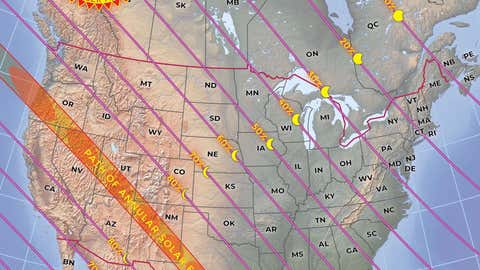
- Cloud cover can make seeing difficult in some areas.
- Even cities not on the direct route could see at least partial blackouts.
- Direct viewing of the eclipse without special equipment is unsafe.
Much of North, Central, and South America will get a chance to see an annular solar eclipse today, October 14, 2023. In the lower 48 states of the United States, some West Coast cities will begin to see a partial eclipse after 8:00 a.m. local time.
Of course, opportunities to see the eclipse are limited to places with clear skies. Skies along the path of totality will be ideal for viewing the eclipse from the Four Corners to Texas, but cloud cover may cause problems in the northwest. If you’re in the partial eclipse zone, the Deep South and parts of the Southern Plains are good places to look with your eclipse glasses. Unfortunately, skies will be overcast from the Midwest to the Atlantic and Northeast.
Here are the latest reports as this exciting event unfolds.
When will the next annual eclipse be visible in the US?
The next annular solar eclipse visible from the United States will not occur until June 21, 2039. Also, most of the country is not in the path of that future eclipse. Alaska is the only state on the route.
NASA Begins Eclipse Live Broadcast
NASA experts and guests broadcast live from Kerrville, Texas and Albuquerque, New Mexico.
The beginning of the eclipse was seen in San Diego
The sun is said to have started to show partial decline shortly after 8:00 am local time in San Diego.
Do not watch the eclipse without special protection
Just because the sun is partially hidden during a solar eclipse doesn’t mean it’s safe to look directly at the glowing star. Your eyes are prone to damage from sunlight. Viewing the eclipse through a standard telescope, binoculars, or camera can cause severe eye damage. Make sure you use the correct one Solar Observer. Sunglasses do not qualify as perfect sun visors.
Which cities are in the ecliptic path?
A good portion of the west is in the path of the annular solar eclipse. Even cities not in the direct path can see at least a partial eclipse, depending on their distance from the eclipse path.

The Meteorological Institute’s primary journalistic mission is to report on weather news, the environment and the importance of science in our lives. This story does not necessarily represent the position of our parent company, IBM.